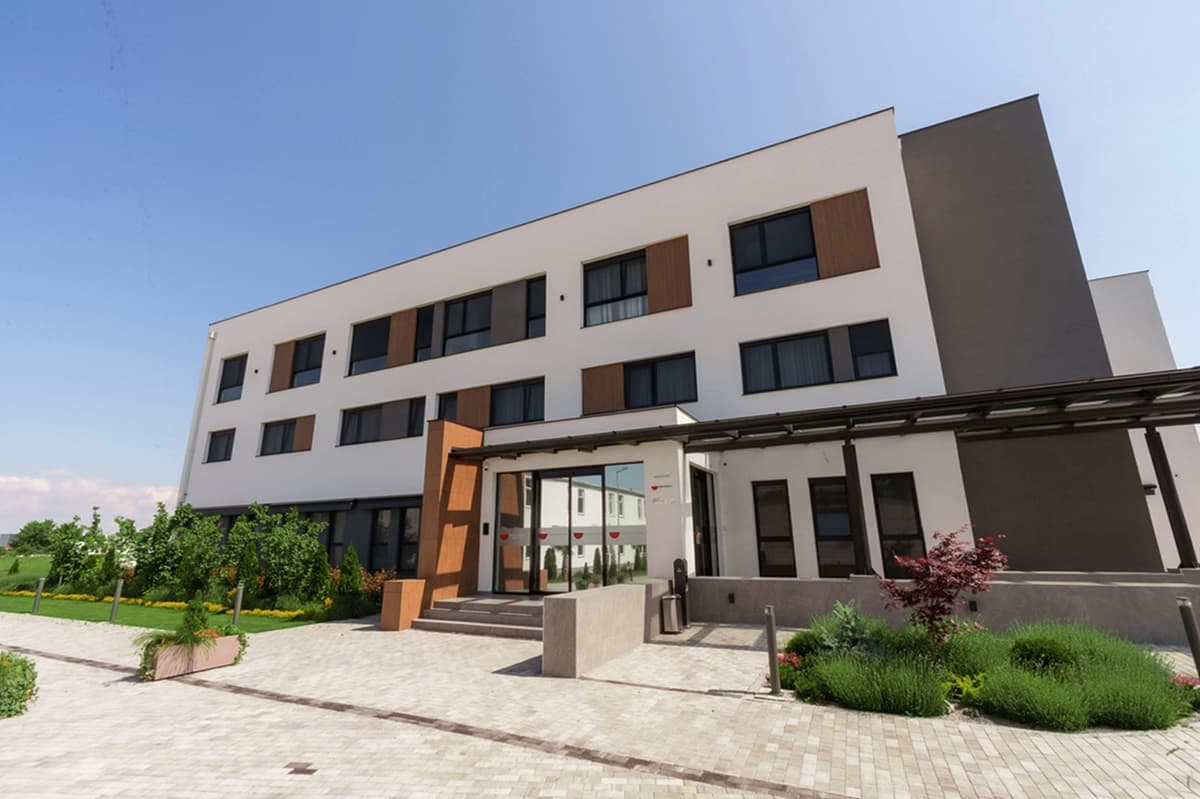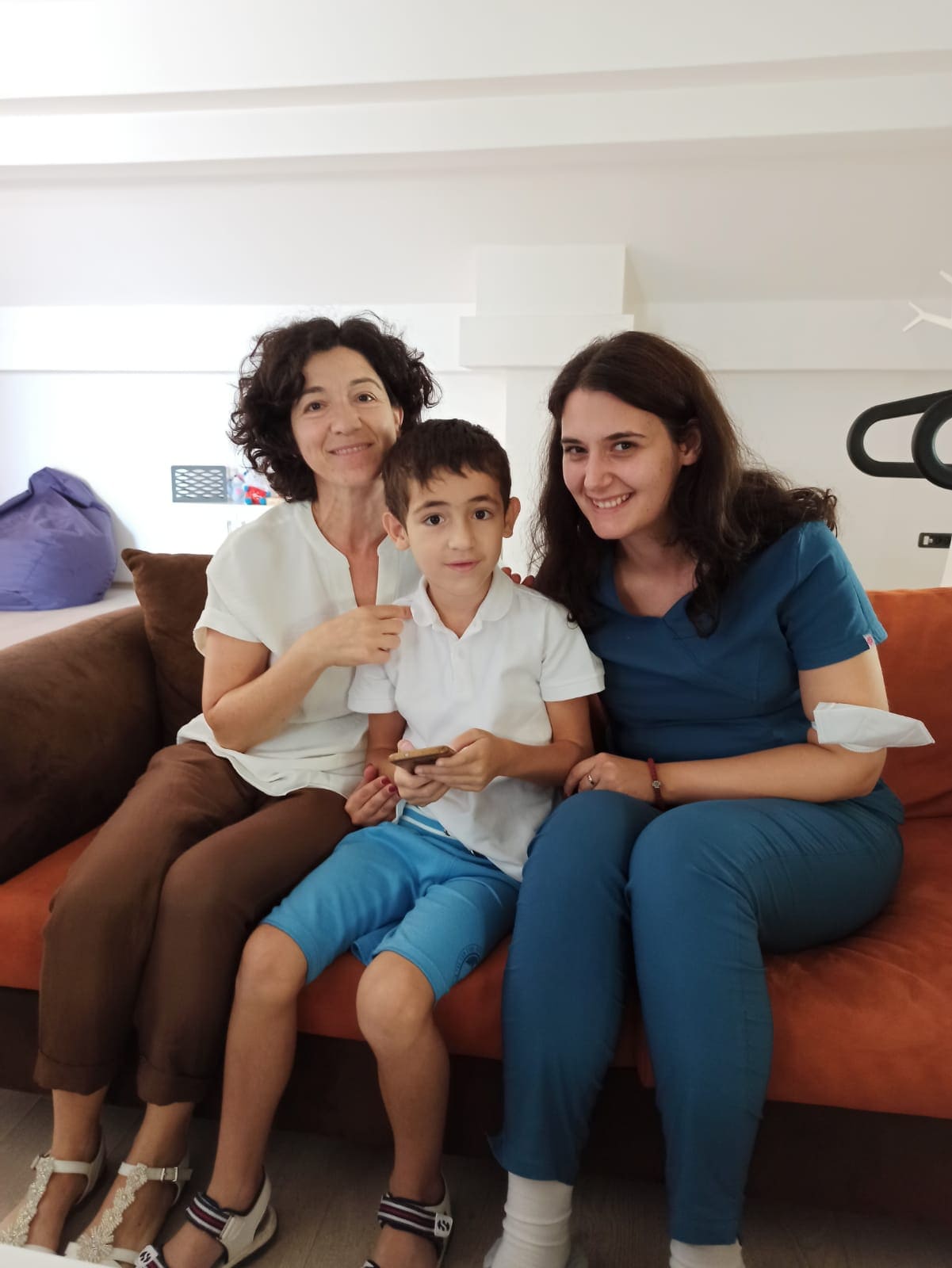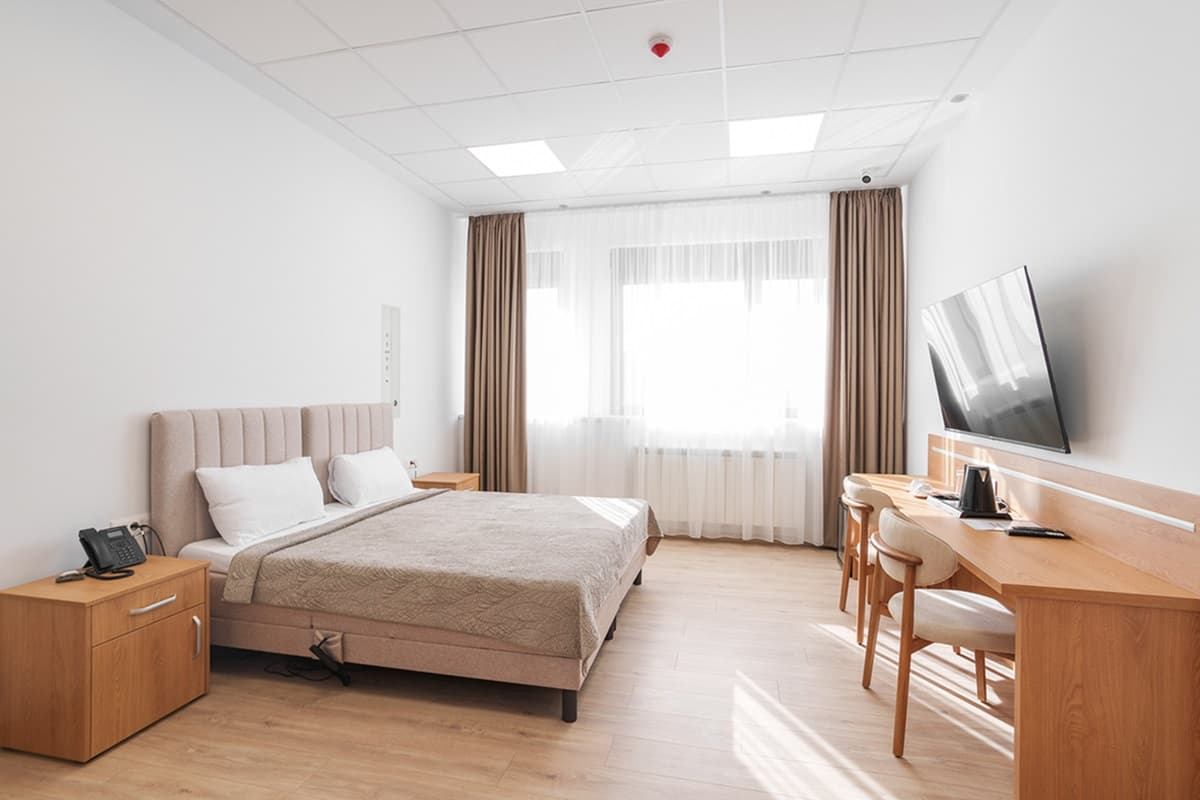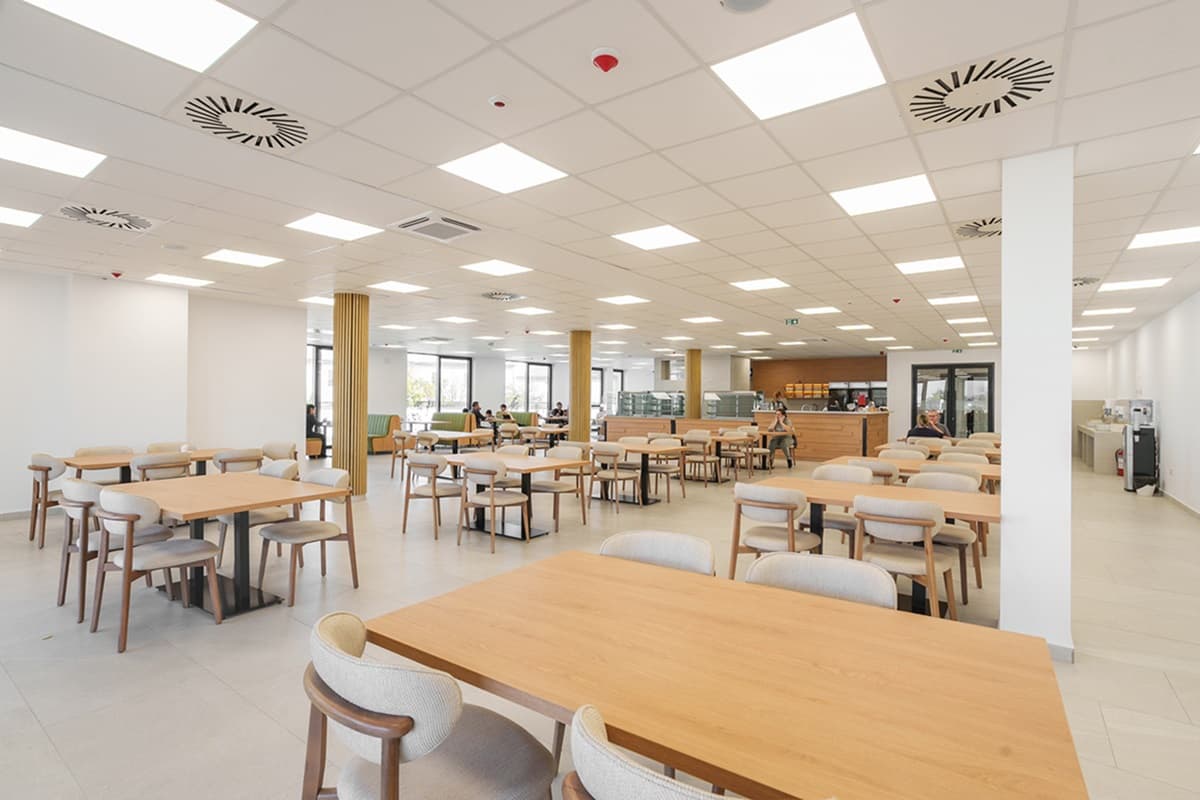Mexico is emerging as an international hub for autism stem cell therapy because it provides easier access and significantly lower costs—often at a fraction of the price in the United States. Families worldwide are increasingly seeking stem cell therapy for autism in Mexico, but regulations and clinic standards may vary. That is why, before making a decision, families should conduct extensive research and consider the advantages and disadvantages before choosing regenerative treatments in that country.
In this article, we will explain how stem cell treatment for autism in Mexico works, how much it costs in comparison to other countries, and what patients should be aware of.
Understanding Stem Cell Therapy for Autism
Stem cell therapy is a form of regenerative medicine aimed at activating the body’s own healing potential through stem cell injections. In autism treatment, mesenchymal stromal cells (MSCs) are most often used. They are considered both effective and safe, and are known as ‘adult’ stem cells because they are obtained after birth (for example, from bone marrow, adipose tissue, or the umbilical cord), rather than from embryonic sources. Unlike embryonic stem cells, MSCs do not carry a risk of uncontrolled growth or tumor formation.
While stem cell therapy is still regarded as experimental and is not yet recognized as a standard treatment in many countries, research continues to grow, demonstrating its safety and potential benefits for autism and other chronic, complex conditions. This growing body of evidence has led to increasing interest worldwide, with stem cell therapy for autism in Mexico becoming a particularly notable option due to accessibility and regulatory flexibility. In fact, even in some U.S. states, despite its experimental status, this therapy is already permitted. Let’s take a closer look at how and why it works.
How Stem Cell Therapy Aims to Help Autism Spectrum Disorders
Two of the biggest biological challenges linked with autism are chronic inflammation in the body and brain and an imbalanced immune system. Researchers suggest that these processes may play a role in the challenges with behavior, communication, and development. Mesenchymal stem cells for autism treatment may help address these underlying issues by:
- Controlling inflammation and balancing the immune system: MSCs release anti-inflammatory factors and interact with immune cells to calm excessive immune responses, restoring the body to a healthier, more stable state.
- Supporting neurons and brain connectivity: MSCs enhance neuroplasticity by stimulating the formation of new synapses, which supports learning and adaptation. They also promote angiogenesis (the growth of new blood vessels), improving cerebral blood flow and helping to counteract the reduced perfusion often observed in autism.
- Regulating cytokines: MSCs reduce harmful pro-inflammatory cytokines while increasing protective ones, creating conditions that support better concentration, communication, and overall functioning.
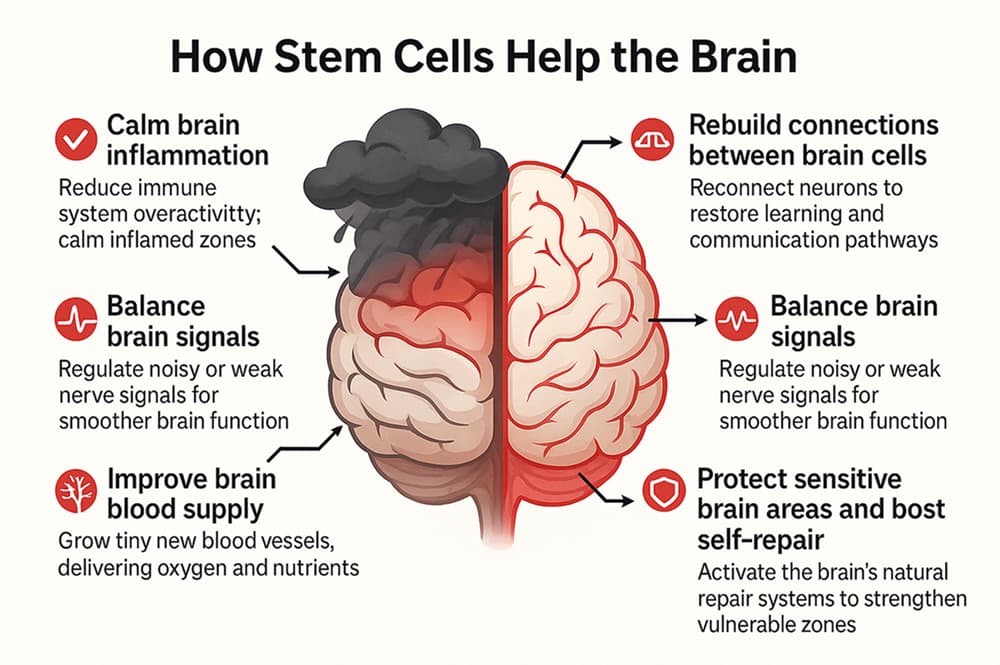
How Successful Is Stem Cell Therapy for Autism?
Most of the evidence for stem cell therapy for autism in Mexico and other countries comes from small clinical trials and patient reports because the field is still relatively new. Nevertheless, findings so far are promising:
- A 2020 trial found that many children with autism improved their social interaction and communication within six months of receiving a stem cell infusion.
- A 2023 review of 461 children receiving stem cell therapy reported significant gains in social skills, attention, and behavior—with no serious side effects recorded.
However, outcomes are variable, and improvements can range from significant to minimal. Major health organizations such as the FDA, EMA, and ISSCR still classify stem cell therapy for autism as experimental and have not approved it for routine clinical use. However, in some countries where regulations differ—such as Mexico or Serbia—the therapy is legally available, even though it remains outside the approval frameworks of the FDA and EMA.
Thanks to flexible regulations and a proven track record of success, many parents are seeking autism treatments in Mexico, as well as in countries like Panama and Serbia. For example, at Swiss Medica in Serbia, we have achieved a high success rate of stem cell therapy for autism: nearly 70–80% of children demonstrate noticeable improvements within a few months.
Our high success rate is best reflected in the real experiences shared by patients and their families. Parents frequently mention milestones, such as fewer meltdowns, improved communication, or even minor but significant accomplishments, as in one of our patients’ stories below.
“Before stem cell therapy, we saw very little progress in my son’s speech and social development, even after trying speech therapy, social clubs, and other interventions. Since the treatment, he has become more socially aware, more engaged with other children, and his communication skills are improving. He is calmer, interacts better with his environment, and we feel hopeful for his future. As a parent, it gives me peace of mind to know that I tried everything possible to help him.”
— Alphonse Mulumber, Australia
Doctors themselves emphasize that stem cell treatments for autistic children in Mexico, the USA, and other countries are not a miracle cure and should be viewed as part of a larger plan. For best results, stem cells should be combined with other proven treatments such as speech therapy, behavioral therapy, or occupational therapy.
Get a free online consultation
If you are considering stem cell therapy for an autistic child in Mexico or other countries, consult a trusted specialist in regenerative medicine first. We offer a free, no-obligation online consultation where you can review your child’s case, discuss the potential benefits and risks, and gain the clarity you need to make an informed decision—without any pressure.

Medical Advisor, Swiss Medica doctor
Is Stem Cell Therapy Available in Mexico?
Stem cell transplants for autism in Mexico are governed by the country’s General Health Law, which sets the framework for how these treatments can be offered. Oversight lies with COFEPRIS, a branch of the Ministry of Health, which is responsible for ensuring that clinics operate safely, follow proper treatment protocols, and hold the necessary licenses.
For now, the law only allows stem cell therapy in very specific cases—mainly blood-related diseases like leukemia, lymphoma, and thalassemia. The use of embryonic stem cells is completely prohibited.
Still, the landscape may change. In 2023, lawmakers proposed updating the rules to officially recognize regenerative medicine and clarify how MSCs derived from fat tissue, umbilical cord, or dental pulp can be used. These proposals have not yet become law, but they signal a growing interest in expanding safe and regulated access to these therapies in the future.
Stem Cell Therapy Methods Commonly Used in Mexico
| Method of stem cell treatment for autism in Mexico | Source | Use in Mexico | Regulatory Status |
| Mesenchymal Stem Cells | Bone marrow, adipose tissue, umbilical cord | Widely applied in private clinics for various conditions | Not officially approved beyond hematopoietic uses; offered under lighter oversight |
| Umbilical Cord Stem Cells (UC-MSCs) | Umbilical cord tissue or blood | Very common in private clinics, often marketed for regenerative therapies | Permitted in practice, but not fully recognized in current law |
| Exosome-Based Therapies | Cell-derived extracellular vesicles | Available in some centers; promoted as advanced regenerative option | Highly experimental, largely unregulated |
Note: While these methods may not be fully approved, that does not mean they are ineffective. Stem cell treatment for autism in Mexico—and in other countries as well—remains an innovative field under clinical trials. Its safety and effectiveness largely depend on a personalized approach, the right dosage, and supportive additional therapies, which is why careful medical guidance is essential.
Top Clinics Offering Stem Cell Therapy for Autism in Mexico
There are several clinics that advertise stem cell treatments for autistic children in Mexico, but their approaches can vary widely. Some use a child’s own cells, others rely on donor sources, and many combine the therapy with additional treatments like exosomes, ABA, or speech therapy.
To help families better understand the options and be aware of possible risks of stem cells in Mexico, we’ve prepared an overview of the main clinics and their approaches in the table below.
| Clinic / Location | Approach & Protocol Highlights | Notes for Families |
| ProgenCell (Tijuana) | Provides autologous stem cell therapies, often sourced from the patient’s own bone marrow or blood. | Focuses on neurological, orthopedic, and autoimmune conditions. |
| IMSS—Instituto Mexicano del Seguro Social (Mexico City) | Public healthcare institution offering hematopoietic stem cell transplants for blood-related diseases. | Treatments are limited to approved conditions. |
| Stem Life Clinic (Guadalajara) | Advertises mesenchymal stem cell therapy protocols with broad applications. | Pricing is quite high compared to other clinics, and the protocols are unclear. |
| R3 Stem Cell (Tijuana / Cancún) | Promotes stem cell treatments for autism in Mexico with various protocols. | Highlights experience and scale; no official clinic website found, only marketing content. |
| Cellular Hope Institute (Cancún) | Markets both autologous and allogeneic cell-based therapies in a professional setting. | Strong branding, but the protocols are unclear. |
| Stem Cell Mexico (Tijuana) | Offers joint therapy and regenerative applications, claiming hospital partnerships. | Pricing is available; registry and oversight details remain inaccessible. |
Patient Experiences and Potential Benefits of Stem Cell Therapy for Autism in Mexico
Recently, more and more families have sought stem cell treatments for autism in Mexico, and some of them report encouraging outcomes and meaningful improvements in their children’s daily lives, even if the results differ from child to child. Some of the reported improvements include:
- Better communication and speech development
- Enhanced social interaction and engagement
- Reduced behavioral challenges and irritability
- Improved attention and concentration
- Cognitive gains and learning progress
- Overall improvement in quality of life
These encouraging reports are highlighted both in medical tourism accounts and clinic-based testimonials. Still, stem cell transplants for autism in Mexico remain an experimental approach, and their safety and effectiveness depend on careful medical guidance and supportive therapies.
We share these results at Swiss Medica. Since 2011, we’ve helped over 1,000 autistic children around the world. Here is some feedback from our patients:
“When my son was diagnosed with autism at three and a half, we tried everything—therapies, medications, alternative approaches—but nothing truly helped. By six, he had lost almost all speech. After his first stem cell treatment at Swiss Medica, we started to see small but meaningful changes: better eye contact, calling us ‘mom’ and ‘dad’ again, playing with toys, and engaging with his therapists. Life is still challenging, but now we can communicate with him—and that has changed everything for our family.”
— Tal, father of a 7-year-old boy with autism
“Communication has always been the hardest part for us—knowing what my daughter wants and helping her express it. After treatment at Swiss Medica, we’ve already seen changes: she’s calmer, her moods are easier to manage, and she’s starting to take small steps toward independence. It’s not scary for the kids at all. For us, it feels like we finally gave her a chance—and that means everything.”
— Furro, mother of a 7-year-old girl with ASD
Risks, Challenges and Concerns with Stem Cell Therapy for Autism in Mexico
In clinical studies, stem cell treatments for autism in Mexico and other countries with MSCs have a favorable safety profile in children. However, parents should be aware that some temporary reactions may occur, and there are rules and marketing issues to consider in Mexico.
Medical risks
Mild side effects such as low-grade fever, headache, nausea, fatigue, or temporary discomfort at the injection site may appear after treatment. These usually pass on their own or with minimal care.
Regulatory risks
The legal status of stem cell treatments for autism in Mexico is not yet fully defined outside blood-related conditions. Here’s a brief summary of the situation:
- Unfinished rules: Mexico’s draft standard (NOM-260) has not been finalized, leaving gaps in nationwide requirements.
- Limited safety tracking: There is no fully functional national registry to monitor side effects.
- Behind international standards: Mexico’s system is less strict than the EU’s framework for advanced therapies. Until NOM-260 and other reforms are finalized, families seeking stem cell transplants for autism in Mexico face greater uncertainty than those in more centralized systems abroad.
Marketing risks
Some clinics offering stem cell treatments for autism in Mexico use optimistic advertising that may overstate potential results. While authorities like COFEPRIS monitor providers, enforcement is still evolving.
How Much Is Stem Cell Therapy for Autism in Mexico? Cost Breakdown
Stem cell therapy costs in Mexico vary by clinic, treatment protocol, and whether repeat sessions are required. Families should also plan for travel and lodging expenses in addition to the treatment itself.
| Clinic / Provider | Location | Advertised Price Range (USD) | Notes |
| ProgenCell | Tijuana | $3,300–$8,300 | Offers autologous stem cell therapies; private clinic. |
| Stem Life Clinic | Guadalajara | $2,500–$25,000 | Wide range of advertised pricing for stem cell therapy protocols. |
| R3 Stem Cell | Tijuana / Cancún | $3,750–$8,850 | Pricing listed per treatment session. |
| Stem Cell Mexico | Tijuana | $2,950 (1 joint), $3,950 (2 joints) | Pricing structure mainly for joint therapy packages. |
| Government Centers (IMSS, HIMFG) | Mexico City | Not publicly priced | Part of the state health system; services generally limited to approved conditions like hematopoietic transplants. |
Why Parents Look Beyond Mexico for Stem Cell Therapy in Autism
Stem cell therapies for autistic children in Mexico are formally regulated by COFEPRIS under the General Health Law, yet important national standards for stem cells are still pending. This gap means that, in practice, the level of regulation and monitoring can differ greatly from one clinic to another.
For families, this creates a complicated landscape. Some clinics make attractive promises and offer a wide range of prices, but they are unclear about protocols and actual results. Even though COFEPRIS has intervened against certain providers, public registries are limited, making it difficult for parents to confirm which clinics follow safe and reliable practices. Due to these uncertainties, many families are considering global autism therapy options in countries with stricter rules and clearer standards.
Where Is the Best Country to Get Stem Cell Therapy for Autism?
There isn’t a single “best” country with stem cells for autism. Rules and access differ widely, so families usually weigh safety, access, cost, and regulation before deciding.
| Country | Pros | Cons |
| United States (clinical trials only) | FDA-supervised research; strong safety monitoring; high standards for consent and data collection. | Access only via clinical trials; strict criteria; limited spots; possible placebo groups; no commercial access. |
| European Union | Advanced Therapy Medicinal Products (ATMPs); hospital exemptions possible in some countries. | Very limited access; often case-by-case in academic hospitals; heavy paperwork; rarely open to medical tourists. |
| Serbia | Legal framework aligned with EU; governmental authorization; more controlled clinics; can be more affordable. | Small market with limited providers. |
| Panama | Transparent protocols and costs published for umbilical cord MSCs. | Not FDA/EMA approved; oversight is internal; families must scrutinize consent and follow-up. |
| Mexico | Convenient for North America; lower costs; some licensed labs and trials; COFEPRIS tightening regulations. | Variable quality; gray-zone clinics and aggressive marketing; wide price range; credentials must be carefully verified. |
Exploring European Alternatives. Serbia: A Reliable Choice for Stem Cell Therapy in Autism
When families consider stem cell therapy for autism, they frequently compare different locations. Mexico has lower prices and easier access, but the rules aren’t uniform, and it can be difficult to verify a clinic’s credentials. Serbia, as an alternative to Mexico stem cell treatments, has a framework closer to EU standards, with verified public infrastructure and stricter gatekeeping, which may give families more confidence—and may be considered the cheapest country for stem cell treatment. In the table below, you can see a full comparison of Serbia and Mexico.
| Factor | Mexico | Serbia |
| Regulation | Core law and COFEPRIS oversight exist, but key standards (NOM-260) are still pending; uneven enforcement. | Legal framework aligned with EU; public protocols in clinics and ATMP-style controls provide clearer oversight. |
| Clinic environment | Many direct-to-consumer (DTC) clinics advertise multiple indications with wide price ranges and limited verifiability. | Fewer clinics overall, but stronger gatekeeping; even private providers benefit from the country’s EU-proximate credibility. |
| Geography & travel | Convenient for families from North America. | Easily accessible from Europe and the United States, thanks to its expanding role as an international hub for many destinations. |
| Price | Broad ranges, often from $2,500 to $25,000 depending on the clinic. | Prices for autism treatments range from €7,000 to €31,000, which are generally lower than in Western Europe (at Swiss Medica €7,000–€19,000)*. |
Why Families Prefer Swiss Medica Over Mexican Clinics for Autism Care
European clinics combine regulation, transparency, and comprehensive care, making them a safer choice for families. Swiss Medica in Serbia is one of them, with more affordable prices than stem cell therapy in Europe.
- Regulated and trusted: Swiss Medica operates under the Serbian Ministry of Health authorization, ensuring every treatment is carefully overseen and protected by clear regulations.
- High care standards: Our lab is GMP-certified, allowing us to provide individualized protocols that have been reviewed by medical specialists and aligned with European safety standards.
- More than a procedure: Treatment programs include rehabilitation, nutrition support, and structured follow-up. We don’t just discharge patients after an injection; our doctors stay in touch for 3–6 months to monitor progress and adjust care as needed.
- Transparent communication: Families receive full details about cell sources, dosages, and procedures. We do not promise that stem cells are a miracle cure; rather, we recommend using them in conjunction with traditional therapies such as occupational or speech therapy, depending on the child’s specific needs.
- Accessible location: Belgrade is centrally located in Europe and can be reached easily from various countries such as Mexico, the United States, India, and others.
- Proven experience: Since 2011, we have treated more than 1,000 children with autism, building both medical expertise and a reputation for safety, honesty, and lasting support.
Swiss Medica’s hospital is a large medical facility that includes its own lab and family-friendly accommodations.
Taking the Next Step: Consulting for Stem Cell Therapy in Autism
Deciding on stem cell therapy for a child with autism is an emotional journey filled with both questions and hopes. At Swiss Medica, we guide families through each step with medical knowledge and a focus on what is most important: your child’s health.
-
1
Step 1: Consult with a Professional in Regenerative Medicine
Your first step is a free online consultation with one of our doctors. This is a safe space to share your child’s story, ask any questions, and understand what stem cell therapy might mean for your family. There is no pressure—only open, supportive guidance.
-
2
Step 2. Undergo a Thorough Medical Evaluation
If you decide to move forward, your child will receive a detailed evaluation. Our doctors gather medical history, review lab results, and conduct assessments with a pediatrician and neurologist. Additional tests may be suggested depending on co-existing conditions. This ensures the treatment plan is safe and truly tailored to your child.
-
3
Step 3. Choosing the Right Place
We encourage families to look at different clinics and see how they work. Rules, cell quality, and follow-up care can all vary greatly. Only based on this comparison can you feel confident and supported in your decision.
-
4
Step 4. Plan Realistically for the Journey
Every child’s progress takes time and unfolds at its own pace. Stem cell therapy is not about quick fixes, but about gradual, meaningful improvements—like better communication, calmer emotions, or more restful sleep.
To support this journey:
- Set gentle expectations—focus on steady changes rather than immediate results.
- Continue ongoing therapies—speech, ABA, and occupational therapy remain important companions to the treatment.
- Consider practical needs—plan for the time, emotional energy, and financial commitment involved, so the process feels manageable for your family.
With patience, a stable routine, and consistent support, many families notice positive changes becoming clearer over the months that follow.
Contact us
Take a safe first step. Book a free online consultation with our medical advisor to explore options at your own pace and make an informed decision for your family.

Medical Advisor, Swiss Medica doctor
Frequently Asked Questions
1. Is stem cell therapy for autism legal in Mexico?
In Mexico stem cell therapy is officially approved only for blood-related diseases, not for autism.
2. How much is stem cell therapy for autism in Mexico?
Prices vary widely—from $2,500 to $25,000—depending on the clinic and treatment plan, but they are generally lower than in the U.S. or Europe.
3. How does Mexico compare to other countries?
Mexico is usually more affordable and accessible but has lighter regulations than the U.S. or EU, while countries like Serbia combine international access with stricter oversight.
List of References:
Price, J. Cell therapy approaches to autism: a review of clinical trial data. Molecular Autism 11, 37 (2020). https://doi.org/10.1186/s13229-020-00348-z
Akat, A., Karaöz, E. Cell therapies for autism spectrum disorder: a systematic review of clinical applications. Middle East Curr Psychiatry 30, 94 (2023). https://doi.org/10.1186/s43045-023-00363-9
Wang, Y., Yi, H. & Song, Y. The safety of MSC therapy over the past 15 years: a meta-analysis. Stem Cell Res Ther 12, 545 (2021). https://doi.org/10.1186/s13287-021-02609-x
MD, Pediatrician, Regenerative Medicine Specialist
